'Time for risks' with comet lander
- Published
- comments

Scientists working on Philae comet lander say it is time to take more risks with the probe, amid fears its battery might die in hours.
There is an expectation that the robot may be entering its last day of useable power on the ice object 67P.
The European Space Agency (ESA) is due to upload commands to tell Philae to deploy its drill.
The hope is that it can pull up some samples to analyse in the robot's onboard laboratories.
It is a high risk activity, however, because the torque could destabilise the delicately placed lander.
Last contact
Philae is sitting in the shadow of a cliff, and will not get enough sunlight to work beyond Saturday.
Friday night's radio contact with the orbiting Rosetta satellite will be the last that engineers have a reasonable confidence will work.
The team is still not sure where on the surface the probe came to rest after bouncing upon landing on Wednesday.
Scientists have been examining radio transmissions between the orbiter and the lander to see if they can triangulate a position.
This work has now produced a "circle of uncertainty" within which Philae almost certainly lies.
Follow-up imagery by Rosetta should now find the little craft, says Paolo Ferri, the head of mission operations at the European Space Agency.
He said Friday's activities would be critical.
"We're coming to the end so we're taking more risks. But we're super happy with what we've done up until now. I can't tell you exactly how much this lander has achieved but it is close to 100%.
"What's missing is the drilling. But with time running out, we're taking risks."
Dr Ferri refuses to give up hope that some last minute solution can be found to solve the power situation: "I am sure our colleagues at the main lander control centre in Cologne will come up with creative ways to collect this energy."
One solution that will be tried on Friday is to turn the main body of the robot to show the largest of its solar panels to the Sun.
The idea is that this could eke out some more life for the lander.

One remarkable image taken by the "mothership" Rosetta shows Philae as a tiny speck, headed for history
Launched in 2004, the European Space Agency (Esa) mission hopes to learn about the origins of our Solar System.
It has already sent back the first images ever taken from the crumbling, fractured terrain of a comet.
Philae got to the icy 67P/Churyumov-Gerasimenko on the back of Esa's Rosetta satellite after a 10-year, 6.4 billion-km (4bn-mile) journey, which reached its climax on Wednesday with a seven-hour drop to the surface.
- Published13 November 2014
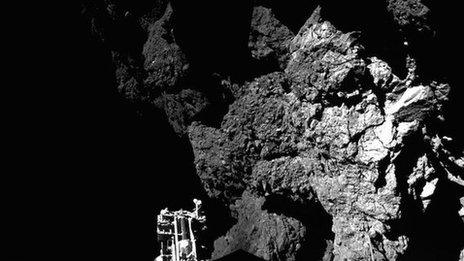
- Published13 November 2014
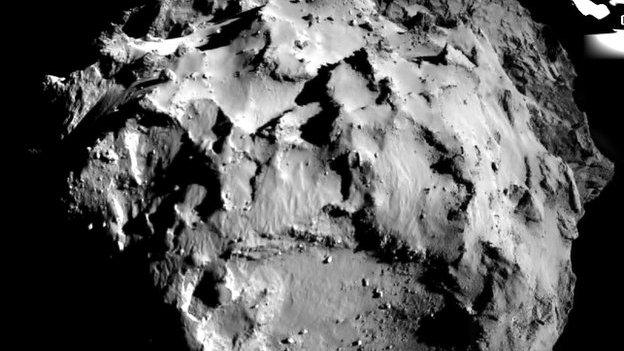
- Published13 November 2014
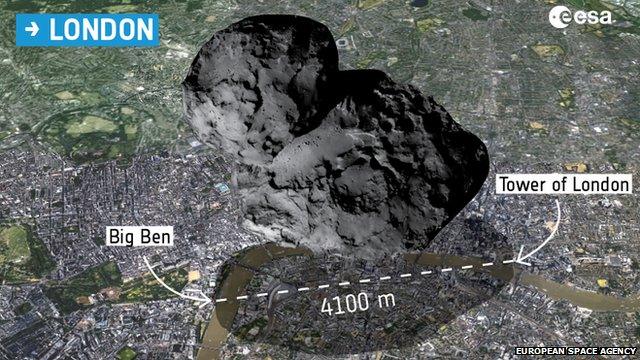
- Published13 November 2014
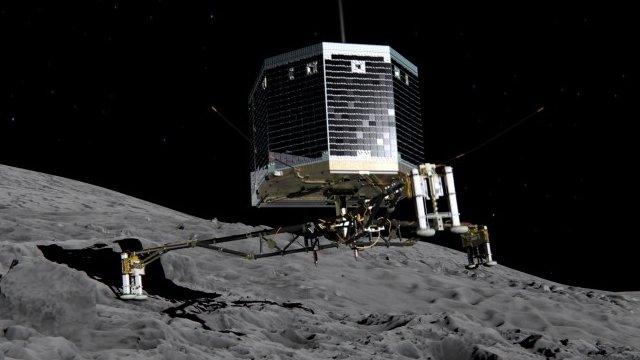
- Published13 November 2014

- Published13 November 2014
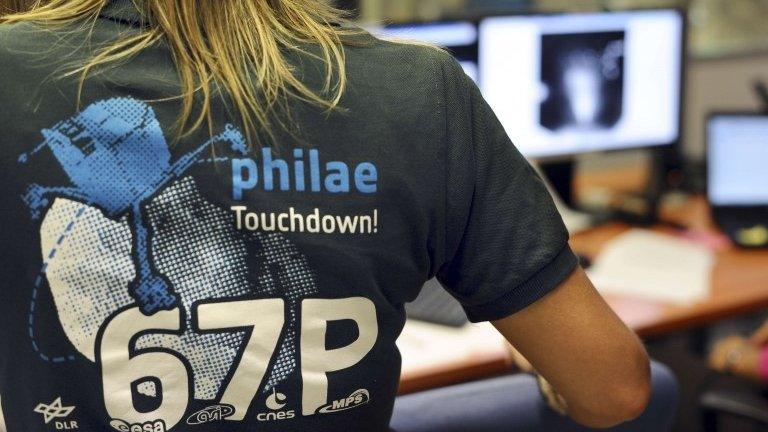
- Published12 November 2014

- Published12 November 2014
